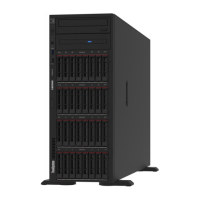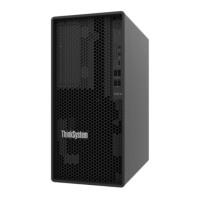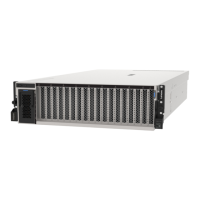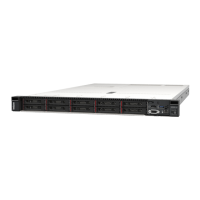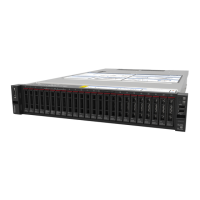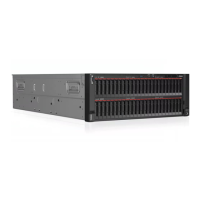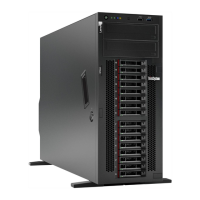• When GPUs are installed, only two backplanes or backplates are supported and no optical drive or tape
drive can be installed.
• One PSU configuration does not support GPU greater or equal to 70W.
• Proactive mode limitation formula: Sum of power of high powered PCIe devices) must be ≦ 1/3*(PSU
wattage)*(total number of active PSUs)
Technical rules for memory modules
Memory modules must be installed in a specific order based on the memory configuration that you
implement on your server.
Memory module installation guideline
There are a number of criteria that must be followed when selecting and installing memory modules in your
server.
For a list of supported memory options, see:
https://static.lenovo.com/us/en/serverproven/index.shtml
Memory installation requirements:
• A label on each DIMM identifies the DIMM type. This information is in the format xxxxx nRxxx PC4-
xxxxx-xx-xx-xxx. Where n indicates if the DIMM is single-rank (n=1) or dual-rank (n=2).
• At least one DIMM is required for each processor. Install at least six DIMMs per processor for good
performance.
• When you replace a DIMM, the server provides automatic DIMM enablement capability without requiring
you to use the Setup utility to enable the new DIMM manually.
• All DIMMs must be either all RDIMMs, or DDR4 and PMEMs.
• Mixing x4 and x8 DIMMs in the same channel is allowed.
• Install DIMMs of the same speed for optimal performance. Otherwise, the BIOS will find and run the
lowest speed among all channels.
• Always populate DIMMs with the maximum number of ranks in the farthest DIMM slot, followed by the
nearest DIMM slot.
• Memory modules from different vendors are supported.
• The following table includes all the feasible combinations of different types of DIMMs:
Table 17. DIMM compatibility
DIMM Types RDIMM PMEMs
RDIMM V V
PMEMs V X
See the following to locate the DIMM slots and corresponding channels.
62
ThinkSystem ST650 V2 Setup Guide

